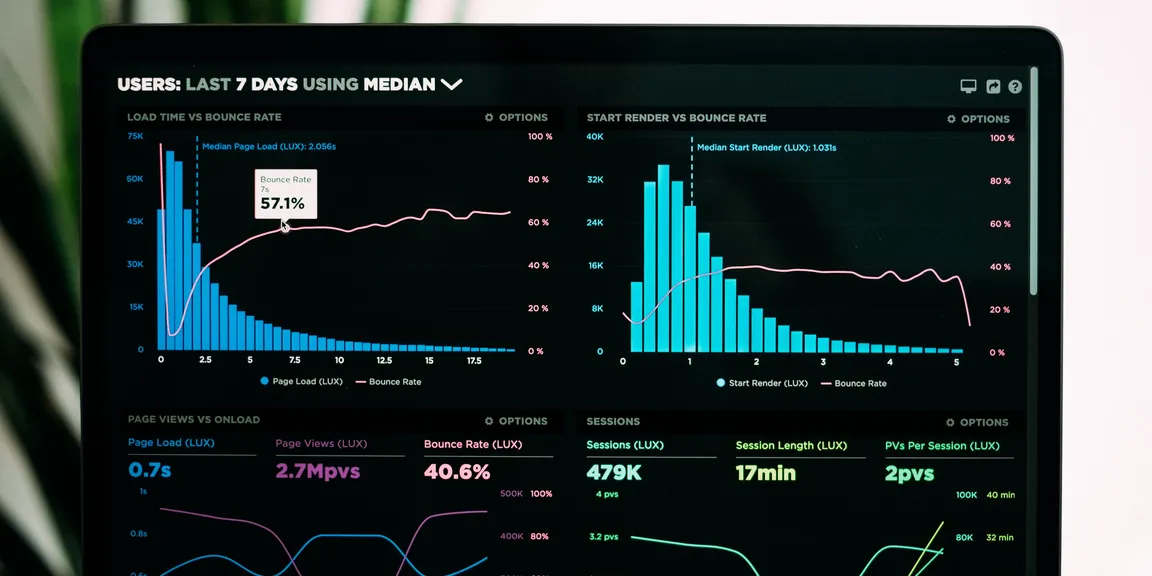

Embedded BI – The Future of Business Intelligence Lies Here
The fusion of analytics with business processes is something enterprises are looking forward today and that is what is being offered best by a popular wing of BI, which is Embedded BI.
“BI is about providing the right data at the right time to the right people so that they can take the right decisions” – Nic Smith
What is Embedded BI?
A world by itself, Business Intelligence services and solutions has left no stone unturned in proving its supremacy across enterprises around the world. Leveraging the potential of BI to its finest, comes multifaceted technologies like Mobile BI, Cloud BI, Embedded BI, Agile BI, Self-service BI etc. that have time and again, proven that BI is now an indispensable ingredient to any organization.
One big name that is gaining increased popularity in the BI domain is Embedded BI. As the name suggests, Embedded Analytics is the unification of analytical competences inside business process applications, in the form of diverse yields like dashboards, reports and self-service analysis. It is the vital technology today, which emphases on permeating reporting and analytic abilities in transactional business applications. It talks about an all-in-one integration between the analytic set-up built by establishments, BI solutions adapted by enterprises and reporting tools.
The multifaceted levels of Embedded Analytics encompass:
- Static Reports
- Managed Interactive Reports
- Interactive Dashboards
- Self-service Reporting and Analytics
- Advanced Analytics
Let us have a look at certain definitions of Embedded BI by tech experts:
As defined by Jaspersoft, Embedded BI is the integration of reports, dashboards, and analytic views inside an application. The information is typically displayed and managed by a BI platform and is placed directly within the application user interface to improve the context and usability of the data. Use of an embedded BI platform delivers state-of-the-art reporting and analytics without the time and expense of having to build it.
As defined by TechTarget, Embedded BI (business intelligence) is the integration of self-service BI tools into commonly used business applications. BI tools support an enhanced user experience with visualization, real-time analytics and interactive reporting. A dashboard may be provided within the application to display relevant data, or various charts, graphs and reports may be generated for immediate review. Some forms of embedded BI extend functionality to mobile devices to ensure a distributed workforce can have access to identical business intelligence for collaborative efforts in real time.
Why Should Embedded BI Be Used in Organizations?
Unlike the traditional way of reporting software, Embedded BI offers a lot of customization that facilitates users to amalgamate data from disparate data sources to suit their business requirements. It can become a part and parcel of the organization’s workflow automation, triggering pre-defined set of actions automatically as per set parameters.
Embedded BI can be leveraged either with in-house development (the solution provider creates its own BI platform and makes it a part of the existing system) or purchasing external software (integration of an analytics solution within the application).
There are certain evident reasons why Embedded BI is a preferred choice of enterprises:
Provides Effective Analytics
Since the time needed for data generation and output is shortened, Embedded BI offers much more effective analytics. It lets the business community take relevant decisions within the workflow itself, without moving much to other external applications and saves big time on cost and matching deadlines.
Possesses Open Architecture and Extensible Platform
Its open architecture mechanism helps in bringing in the best possible analytical solution with availability of extensible platforms and increased flexibility. This makes it ideal to cater to quick and futuristic business requirements and analysis, from the heaps of data available.
Increased Usage with Cloud Computing and Big Data Solutions
Owing to increased usage of Big Data solutions and cloud platforms, implementation of embedded analytics is becoming simpler. The cloud computing avoids the complexities involved in BI solutions deployment and cost-effective models make it easy to adapt. Novel Big Data solutions lessen the load of handling voluminous data hence making the entire set up much more user friendly.
Less Stress on Data Sources
Be it any size or segment of business, organizations that have huge data sets can leverage this platform without much stress on the data resources. In-depth and powerful reports / dashboards can be created with drill-down facility, without much botheration to the users as well as data sources.
Increased Focus on Revenue Generation
With Embedded BI doing most of the report generation by itself, the users get their creative time to focus on how to grow business and increase revenue. They can focus on their core competencies and offer a competitive edge over others.
Unified Platform for Users
Serving the basic purpose, Embedded BI is a blessing to users who do not wish to keep shuttling between different platforms and wish to work in a single environment. Users get saved on many duplicating tasks like buying, installing and using other tools. This also saves a lot on the time front increasing productivity bigtime.
Faster Go-to-market
With key features like inbuilt data management, complete data integration with various sources and flexible design approach, Embedded BI offers a swifter go-to-market ratio to its end users.
Transforming Data into Value
Embedded BI possesses the capability to transform information assets into analytics and insightful reports / dashboards that can offer business specific details, as needed by the user, without having to go to external applications.
Key Features that Makes Embedded BI a Popular Technology
- Transportable & Customizable Dashboards
- Business Conception
- Web & Desktop Reporting
- Mobile Business Intelligence
- MS Office Integration
- OLAP Storage & Exploration Interface
- Business Metadata Management
- Flexible Deployment Choices
- Guided Analysis & Model Development
- In-Memory Enhancements
- Instant Infrastructure
- Data Modelling & Blending
- Governed Data Recovery
What are the Prime Factors to be Evaluated While Considering Embedded BI?
While you are looking for an ideal Embedded BI solution, there are certain major factors that play an important role in deciding your approach towards choosing your Embedded BI needs. Here they are:
Security
- Is there enough emphasis on making sure the correct people are viewing the correct data?
- Is there provision for multi-tenant and role-based security?
Customization
- Is there enough availability of a variety of APIs, plug-ins, CSS etc.?
Custom V/s Readymade
- Have you analysed and brainstormed to finalize whether you need a customized solution or a readymade one?
Architecture
- Are performance and scalability needs identified and analysed?
Cost Analysis
- Are licensing and budget issues discussed at length?
Futuristic Requirements
- Have you foreseen futuristic needs to be incorporated?
Timelines to Implement
- Have you ensured the timelines that the solution will take to start-off?
- How long will it take for the embedded solution to start offering results?
Third Party Integration
- Is your solution competent enough to handle third party software solutions within your own?
- Does it need additional tools from third-party vendors?
Scalability
- What quantity of data can a single server process?
- What is the user capacity for database access?
What are the Different Models in Embedded Analytics?
What is Technology without a challenge? Same applies to Embedded BI too. There are certain pointers that pose as a challenge for easy and secure implementation of Embedded BI but have their own solutions to challenge the challenge, hence not an issue but need attention.
Exponential Data Growth
The rate at which data is growing, by leaps and bounds, across industries is alarming. There are newer methods coming up for data analysis and storage it surely is a matter of concern. Since Embedded BI embeds itself into the application, the data growth needs to be catered to, right from the start.
Licensing Issues
Licensing is one big challenge that is posed in front of the clients, discouraging them from using systems more often. Sometime, choosing an Embedded BI solution calls for licensing tasks that increase the cost overhead by a large margin, not allowing users to implement the solution effortlessly. Licensing models must be designed in such a way that it is easy for users to purchase and maintain licenses, irrespective of user strength and spread of Embedded BI solution.
Inadequate Deployment Choices
Usually, it is the cloud that works well. But if the solution requires an on-premised option, it could be a little difficult to implement the BI solution
Increase in Infrastructural Costs
With the user range increasing, from a few employees to more, there are chances of increase in the cost estimates that include infrastructural costs, upgradation cost etc. If not estimated in advance, this could pose as a hurdle in the future run.
RoI Based on Embedded BI Solution
Calculating the return on investment that an organization that implements Embedded BI solution isn’t easy. There are factors associated and methods derived but no unified way to come to an exact figure.
What is the Future of Embedded BI?
- Business Getting More Data Driven with Increase in Data Analytics
- Increased usage of IoT, Mobility and Wearables Exposing Data Bigtime
- Microsoft Power BI Embedded
- Fundamental Collaborative Analytics taking business forward
- Self-service BI catering to increased user base
- Higher acceptance of cloud computing for scalability
- Harnessing the power of Predictive Analytics to predict the future
- Artificial intelligence leveraging the power of Embedded BI
And much more to come…
As We Wrap It Up
As we see Embedded BI growing to be an indispensable ingredient in the world of Business Intelligence services and solutions, it is interesting to watch how far will its reach spread. Business experts are making strong predictions that showcase that there is no looking back for Embedded BI. Especially, with other BI components such as Cloud BI, Mobile BI, Self-service BI, Predictive Analytics etc., the world of Embedded BI is sure to grow wider and deeper.



